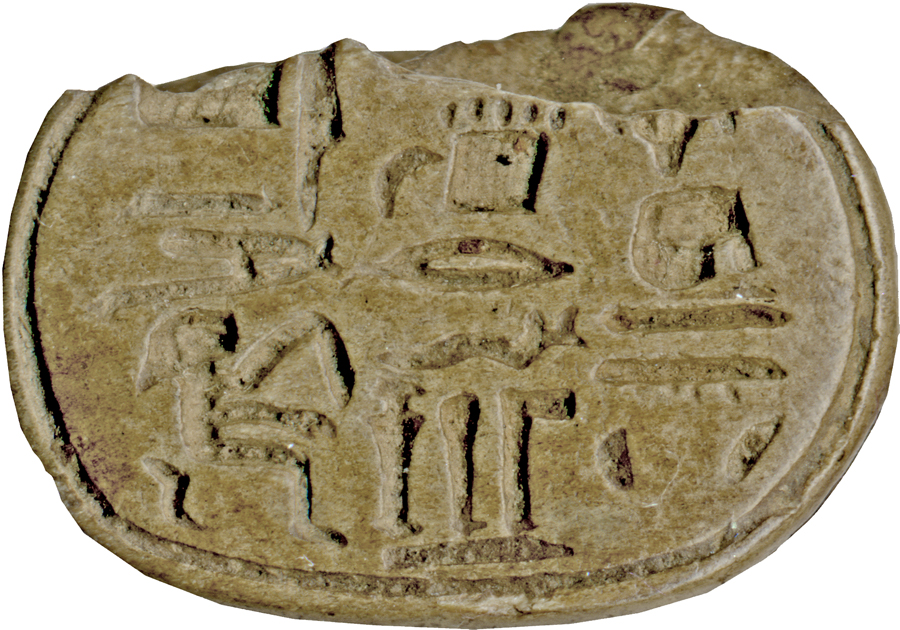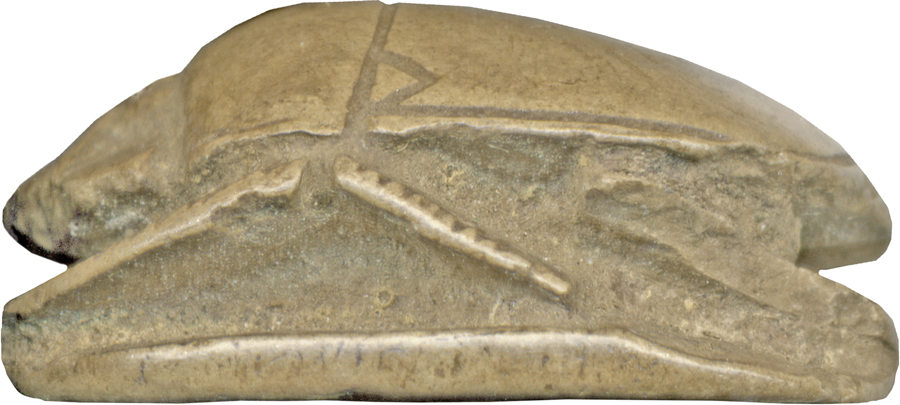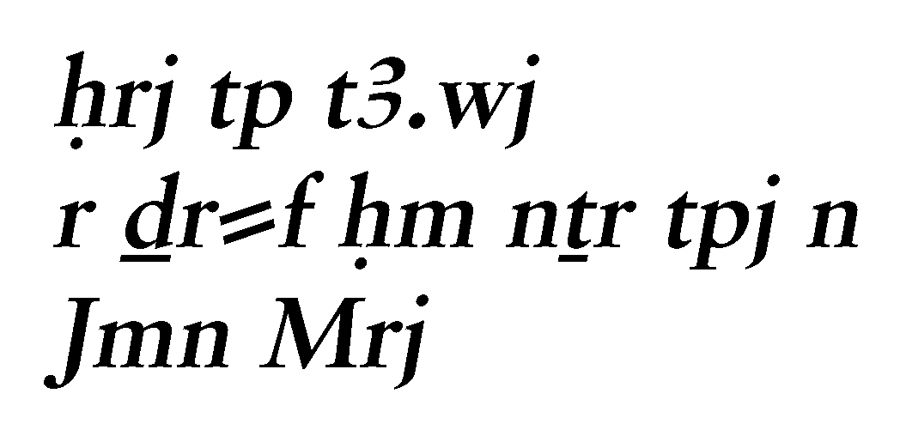Scarab with Name of Meri
(Ancient Egypt and Nubia )
This steatite scarab is inscribed on the flat underside with horizontally arranged writing naming an individual and making a statement of social status. The back of the scarab is incised with a very detailed design. The workmanship of the piece is good and it is carefully made.
The scarab functioned as a private name seal, and as a user individualized amulet. It was originally mounted or threaded. The amulet should guarantee constancy of individual existence and social status.
Meri was the High priest of Amun in Thebes in the reign of Amenophis II (1428-1397 BCE). He is well known from his tomb in Thebes, and his statue in the Egyptian Museum in Cairo.
Inscription
Provenance
Provenance (from the French provenir, 'to come from/forth') is the chronology of the ownership, custody, or location of a historical object. Learn more about provenance at the Walters.
Henry Walters, Baltimore [date and mode of acquisition unknown]; Walters Art Museum, 1931, by bequest.
Geographies
Egypt (Place of Origin)
Measurements
H: 3/8 x W: 9/16 x L: 13/16 in. (0.9 x 1.4 x 2 cm)
Credit Line
Acquired by Henry Walters
Location in Museum
Not on view
Accession Number
In libraries, galleries, museums, and archives, an accession number is a unique identifier assigned to each object in the collection.
In libraries, galleries, museums, and archives, an accession number is a unique identifier assigned to each object in the collection.
42.49














